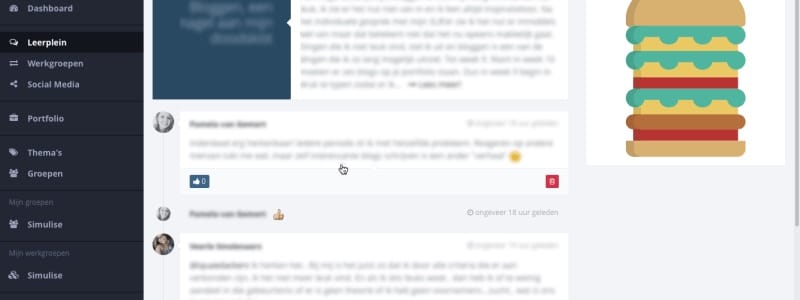The modern portfolio

In recent months, I’ve been talking to a lot of people about the learning portfolio. People from education, business students and apprentices. What is interesting to note is that everyone has a different view of portfolio. Fortunately, portfolio is no longer viewed simply as a set of data to be read out and into an electronic learning environment. It is also no longer just a transfer document between schools. We did solve that with things like Digital Transfer File (DOD) or VOROC.
What has been, and apparently continues to be, a point of discussion for 10 years is portfolio ownership. Also, the purpose of the portfolio is certainly not yet clearly defined. Each employer or school sees this in its own way. Portfolio meant for profiling, grade sheets, as a work environment, on paper in MS excel, everything is mentioned.
Therefore, as a provider of an innovative digital portfolio, I thought it would be good to give our view of portfolio for life.
First, the issue of portfolio content. The portfolio shows what a person can do and preferably how that is judged by others. It shows it how someone arrived at a result. In the context of 21st Century Skills, a portfolio shows, among other things, how a person has collaborated and communicated, how a solution to a problem was arrived at, how critical and creative one has been in completing a task. That, by the way, is where the big difference with other CV databases lies. Your portfolio is less about subjects and associated grades or job titles, it is about the process of tackling an assignment. Having these aspects assessed by peers, teachers and tutors provides insight into what a person can and knows.
In the portfolio, I would like to find more. A profile description and a presentation by the portfolio owner also seem to me to be part of a portfolio. Supplemented, for example, by a 360-degree review and a profile or vocational test. Then you show a complete picture of a person. Of course, grades can be part of a portfolio, but there are already other resources available for that.
Then portfolio ownership. Because we assume a portfolio for life (also called portfolio4life or longlifeportfolio), it is almost inevitable that the portfolio belongs to the student or employee. He takes this from school to school and employer to employer. Even as a self-employed person, he can use the portfolio to raise his profile.
I don’t want to get into the discussion about LOM and IEEE standards. The portfolio, like your LinkedIn profile, is available on the Internet. And can be linked to other environments. Point.
What is important is that the owner determines who can see what. He can invite others to view (parts of) his portfolio. He can make parts public and close parts entirely.
A school or employer may (with a student/employee’s permission) complete a portfolio. With assignments, ratings, badges and comments etc. Of course, the school keeps its own copy of that part of a student’s portfolio.
When transferring between schools and, for example, when applying to Higher Education, the student can use the portfolio to present himself to his desired continuing education.
An employee or self-employed person uses their portfolio to raise their profile permanently. Not just with job titles but with descriptions of assignments and how they were accomplished. And reviews from peers on this. This shows that you are growing, continuing to learn and develop. That makes this a portfolio for life. Like your resume profile, it is constantly being added to and sometimes expires the parts that are no longer relevant.
From Simulise, we have always assumed a portfolio owned by the student. And that is available throughout his life. We make it easy to use, interesting for the owner and stakeholders, and fun to use both in a school and work situation.

